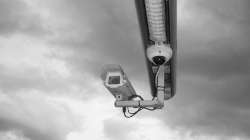Installing CCTV System? Here is all that you need to know
Here are things you should look for before buying a CCTV system for yourself.

Many new and interesting use cases of CCTV cameras have come to the forefront in the last couple of years. For instance, they are used in monitoring social distancing in public places as part of COVID 19’s prevention measures, security at various locations, clubs, hotel lobbies and much more. They have been an integral part of many households.
CCTV continues to provide both added security and convenience to the common man’s life. With the sophistication of video surveillance systems and with the introduction of AI, the industry is moving rapidly toward what we call smart video solutions. In general, a smart video-based camera system makes use of video cameras, also called surveillance cameras, transmits the signal to a monitor or set of monitors, and gives real-time 24/7 viewing access.
No matter who uses the CCTV camera for upgrading their ecosystem, one must keep several points in mind before installing the CCTV at homes, offices, hospitals, streets and anywhere to navigate. Here we come up with the tips which might help you in installing the CCTV system and what should be kept in mind to do the needful:
Camera
There are two camera options for choosing a CCTV camera: Internet Protocol (IP) or analogue. IP cameras are feature-rich and are gaining popularity and have revolutionized the adoption of video surveillance solutions. IP cameras capture high-definition footage, images and sharper video details. These cameras also offer analytics capabilities such as data for video analytics, real-time automatic alerts, etc. Another key advantage is that a new IP camera can be added to the current network at any time and will be recognized by the recorder. IP camera adoption is becoming widespread as these cameras become more affordable. Analogue cameras are the traditional cameras that have been used in CCTV deployments and are being phased out slowly.
One can decide on the camera depending on their requirements and the kind of monitoring that is needed. The number of cameras will depend on the angles and area to be covered and the resolution required.
Monitoring Station
Once the decision is made on which kind of camera to use, the next step is to set up a monitoring station. The number of monitors will again depend on the angles and area covered and the image resolution required. You wouldn't need more than three to five screens if you aren't operating in a large-scale facility. Moreover, it is easy to scale up or down the number of monitors as needed.
Another factor is whether you plan to do remote monitoring through a smartphone, tablet, or computer. For example, if there are elderly parents, children or pets at home, then remote monitoring may be needed. This enables one to watch live videos or even set up a real-time alert system, in case something requires faster attention when it is not possible to watch live videos.
Video Recorders
Video is recorded on a device known as a video recorder, where the video is stored for processing and viewing. There are two types of video recorders: DVR (Digital Video Recorders) and NVR (Network Video Recorders). The DVR system processes data at the recorder, while the NVR system encrypts and processes data in the camera before sending it to the recorder for storage and remote viewing.
Data Storage
Data plays a significant role in the smart video solution industry. Video needs to be stored for analysis either on-premises or in the cloud. Businesses must factor in building a reliable, scalable, and most often, customized data storage solution(s) that can help store and analyse the raw footage. The absence of proper data storage can make AI-powered smart video solutions very limited in scope. There is a variety of storage solutions for different kinds of smart video or CCTV systems. The digital video recorder (DVR), or a network video recorder (NVR) that houses the storage will need to support the right capacity and reliability so that the recording can be retained for the desired period.
Data is being generated, captured and stored from multiple sources - from endpoints to the edge and in the cloud. Western Digital provides flash-based storage solutions in the form of WD Purple® microSD™ cards up to 1TB[1] for the edge and endpoints requirements and WD Purple HDDs up to 18TB for NVRs and video analytics appliances.
Routers and Wires
Supporting technologies including cables and routers will be needed for a seamless connection, depending on the type of camera and systems chosen. For example, wireless systems will require a router. A security integrator can help in choosing equipment and managing the deployment.
Conclusion
Businesses are best served to invest in the right cameras, monitors, storage, and recorders, based on the technologies outlined here. A CCTV camera system and advanced smart video solutions are an integral part of improving one’s life, whether at home, work, or out in the community.
(This article has been written by Jaganathan Chelliah, Senior Director – Marketing, India & MEA, Western Digital. All the thoughts mentioned in the article are personal)